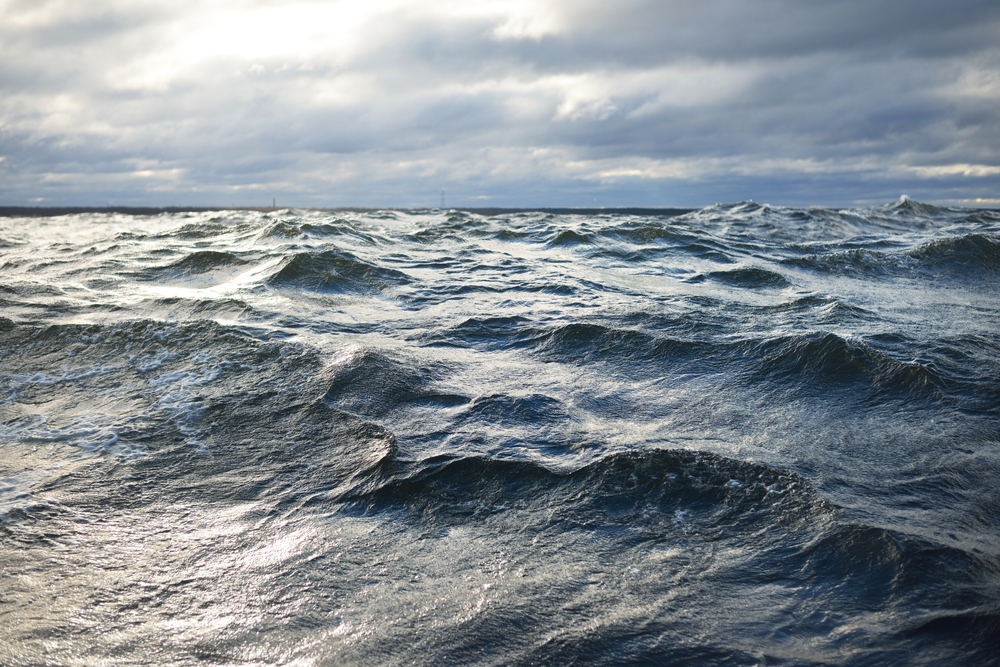Sinkites Are Strange Bodies of Sand Beneath the Sea, and They’re Breaking the Laws of Geology


Earth’s layers of rock are typically superimposed, or laid one on top of another, meaning that the oldest layers tend to be buried beneath the youngest layers. But researchers recently confirmed that this isn’t always the case, as strange bodies of sand can cause stratigraphic inversion — the interruption of the ordinary order of rock layers — at the bottom of the sea.
Revealing their results in Communications Earth and Environment, the researchers say that these bodies of sand, or “sinkites,” appear beneath the North Sea and date back to the Miocene and Pliocene epochs, between around 20 million and 2.6 million years ago. Though stratigraphic inversions have been detected in layers of rock in the past, they haven’t been detected at this scale or size, as there are hundreds of North Sea sinkholes that measure around a kilometer (over half a mile) across or more.
“This discovery reveals a geological process we haven’t seen before on this scale,” said Mads Huuse, a researcher and professor from the University of Manchester who was involved in the research, according to a press release. “What we’ve found are structures where dense sand has sunk into lighter sediments that floated to the top of the sand, effectively flipping the conventional layers we’d expect to see and creating huge mounds beneath the sea.”
Read More: BLOBS 1,500 Miles into Earth’s Mantle May Cause Massive Volcanic Eruptions on the Surface
Detecting Sinkites in the Sea
The laws of stratigraphy are a set of fundamental rules that reveal the history of Earth. Geologists use these laws to understand the relationships and relative ages of Earth’s rocks, although the rules themselves aren’t without their limitations. In fact, the first and most fundamental of these laws is the law of superposition, which holds that the oldest layers of rock tend to be the farthest from the surface, while the youngest layers of rock are typically the closest to the surface.
But this law can be contradicted in deposits disturbed by earthquakes and other disruptive events, as recent research has shown. By detecting the sinkites with seismic imaging and well sampling, the researchers have suggested that layers of younger, denser material have seeped beneath layers of older, lighter material in areas across a substantial span of the North Sea, disrupting the organization of the layers of rock and defying the laws of stratigraphy.
Read More: Deep-Sea Deposits of Amber May Document Massive 116-Million-Year-Old Tsunamis
Sinkites and Floatites
According to the researchers, the most likely explanation is that earthquakes in the Miocene or Pliocene epochs caused these sinkites to form, flipping the positions of the younger sand and the older sediment, which was mostly made of ooze, or microscopic marine fossils. While blobs of the sunken, denser sands became sinkites, the bodies of the lifted, lighter sediments were dubbed “floatites” by the team.
The results of the research could provide important insights into the laws of stratigraphy and could have future implications for finding oil and gas and for storing carbon dioxide within Earth’s layers.
“This research shows how fluids and sediments can move around in the Earth’s crust in unexpected ways,” Huuse said in the release. “Understanding how these sinkites formed could significantly change how we assess underground reservoirs, sealing, and fluid migration — all of which are vital for carbon capture and storage.”
To solidify their findings, the researchers are already searching for other areas where sinkites and floatites have formed. Their hope is to learn more about the formation of these sandy and sedimentary blobs and to tease out their implications for the fundamental laws of geology.
“As with many scientific discoveries, there are many [skeptical] voices, but also many who voice their support for the new model,” Huuse said in the release. “Time and yet more research will tell just how widely applicable the model is.”
Read More: Glacier in Antarctica Caught Committing Ice Piracy From Its Neighbor
Article Sources
Our writers at Discovermagazine.com use peer-reviewed studies and high-quality sources for our articles, and our editors review for scientific accuracy and editorial standards. Review the sources used below for this article:
Sam Walters is a journalist covering archaeology, paleontology, ecology, and evolution for Discover, along with an assortment of other topics. Before joining the Discover team as an assistant editor in 2022, Sam studied journalism at Northwestern University in Evanston, Illinois.




